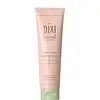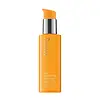What's inside
What's inside
 Key Ingredients
Key Ingredients

 Benefits
Benefits

 Concerns
Concerns

 Ingredients Side-by-side
Ingredients Side-by-side

Water
Skin ConditioningPropanediol
SolventPolyglyceryl-4 Caprate
EmulsifyingAllantoin
Skin ConditioningPanthenol
Skin ConditioningNelumbo Nucifera Flower Water
TonicSaccharomyces/Nelumbo Nucifera Ferment Extract Filtrate
AntioxidantSaponaria Officinalis Extract
Skin ConditioningAloe Barbadensis Leaf Extract
EmollientVeronica Officinalis Leaf Extract
Skin ConditioningGlycolic Acid
BufferingAesculus Hippocastanum Extract
AntioxidantActinidia Chinensis Fruit Extract
EmollientAnanas Sativus Fruit Extract
Skin ConditioningBetaine
HumectantCitrus Aurantium Dulcis Fruit Extract
MaskingCitrus Limon Fruit Extract
MaskingCitrus Paradisi Fruit Extract
Skin ConditioningHamamelis Virginiana Extract
AntiseborrhoeicLactobacillus Ferment
Skin ConditioningPanax Ginseng Root Extract
EmollientPyrus Malus Fruit Extract
Skin ConditioningTocopherol
AntioxidantVitis Vinifera Fruit Extract
Skin ConditioningCarbomer
Emulsion StabilisingPolyglyceryl-10 Laurate
Skin ConditioningPotassium Hydroxide
BufferingEthylhexylglycerin
Skin Conditioning1,2-Hexanediol
Skin ConditioningCitrus Aurantium Dulcis Peel Oil
MaskingPelargonium Graveolens Flower Oil
MaskingLavandula Hybrida Oil
EmollientEucalyptus Globulus Leaf Oil
PerfumingJuniperus Mexicana Oil
MaskingLimonene
PerfumingPhenoxyethanol
PreservativeWater, Propanediol, Polyglyceryl-4 Caprate, Allantoin, Panthenol, Nelumbo Nucifera Flower Water, Saccharomyces/Nelumbo Nucifera Ferment Extract Filtrate, Saponaria Officinalis Extract, Aloe Barbadensis Leaf Extract, Veronica Officinalis Leaf Extract, Glycolic Acid, Aesculus Hippocastanum Extract, Actinidia Chinensis Fruit Extract, Ananas Sativus Fruit Extract, Betaine, Citrus Aurantium Dulcis Fruit Extract, Citrus Limon Fruit Extract, Citrus Paradisi Fruit Extract, Hamamelis Virginiana Extract, Lactobacillus Ferment, Panax Ginseng Root Extract, Pyrus Malus Fruit Extract, Tocopherol, Vitis Vinifera Fruit Extract, Carbomer, Polyglyceryl-10 Laurate, Potassium Hydroxide, Ethylhexylglycerin, 1,2-Hexanediol, Citrus Aurantium Dulcis Peel Oil, Pelargonium Graveolens Flower Oil, Lavandula Hybrida Oil, Eucalyptus Globulus Leaf Oil, Juniperus Mexicana Oil, Limonene, Phenoxyethanol
Water
Skin ConditioningGlycerin
HumectantDecyl Glucoside
CleansingAmmonium Acryloyldimethyltaurate/Vp Copolymer
Cocamidopropyl Betaine
CleansingCitrus Sinensis Fruit Extract
AntioxidantPhenoxyethanol
PreservativeGlycolic Acid
BufferingDisodium EDTA
3-O-Ethyl Ascorbic Acid
Skin ConditioningEthylhexylglycerin
Skin ConditioningLactic Acid
BufferingSodium Lactate
BufferingPropylene Glycol
HumectantSodium Sulfite
PreservativePunica Granatum Extract
AstringentAlcohol Denat.
AntimicrobialAnanas Sativus Fruit Extract
Skin ConditioningPassiflora Quadrangularis Fruit Extract
Skin ProtectingVitis Vinifera Fruit Extract
Skin ConditioningParfum
MaskingCitral
PerfumingLimonene
PerfumingWater, Glycerin, Decyl Glucoside, Ammonium Acryloyldimethyltaurate/Vp Copolymer, Cocamidopropyl Betaine, Citrus Sinensis Fruit Extract, Phenoxyethanol, Glycolic Acid, Disodium EDTA, 3-O-Ethyl Ascorbic Acid, Ethylhexylglycerin, Lactic Acid, Sodium Lactate, Propylene Glycol, Sodium Sulfite, Punica Granatum Extract, Alcohol Denat., Ananas Sativus Fruit Extract, Passiflora Quadrangularis Fruit Extract, Vitis Vinifera Fruit Extract, Parfum, Citral, Limonene
Ingredients Explained
These ingredients are found in both products.
Ingredients higher up in an ingredient list are typically present in a larger amount.
Ananas Sativus Fruit Extract comes from the pineapple fruit. Pineapples are native to South America. The components of pineapple give it mild exfoliating and skin nourishing properties.
Pineapples contain Vitamin C, Vitamin B6, copper, potassium, niacin, and other minerals. It also contains many phytochemicals, including ferulic acid, coumaric acid, arbutin, and more. These help condition the skin.
Bromelain can be found in all parts of a pineapple. It is a mixture of enzymes and is mildly exfoliating.
Learn more about Ananas Sativus Fruit ExtractEthylhexylglycerin (we can't pronounce this either) is commonly used as a preservative and skin softener. It is derived from glyceryl.
You might see Ethylhexylglycerin often paired with other preservatives such as phenoxyethanol. Ethylhexylglycerin has been found to increase the effectiveness of these other preservatives.
Glycolic Acid is arguably the most famous alpha hydroxy acid (AHA) with tons of research backing its benefits.
It is found naturally in sugar cane but the form used in skincare is usually synthetic for purity and stability.
Glycolic acid removes the top layer of dead skin cells to allow newer and fresher ones to emerge.
AHAs work by breaking down the structural “glue” that holds old skin cells in place. When that buildup is gone, your skin can renew itself more efficiently.
Research also shows glycolic acid stimulates collagen production, helping to firm and thicken the skin over time. This is one of its biggest advantages over other AHAs.
Overall, glycolic acid helps with:
Fun fact: Glycolic acid boosts skin hydration by helping it produce molecules that increase hyaluronic acid naturally.
To work best, glycolic acid products should have a pH between 3-4 (that’s where exfoliation is most effective but still gentle on skin).
The pH and concentration of a product are key to its effectiveness:
It is normal to feel a slight stinging sensation when using glycolic acid. This usually fades as your skin adjusts.
Because glycolic acid has the smallest molecular size in the AHA family, it can penetrate deeper, which enhances its effectiveness but also makes it more likely to irritate sensitive skin.
If your skin is very sensitive or prone to rosacea, glycolic acid may be too strong; in that case, try milder options like lactic acid or a PHA instead.
Recent studies suggest glycolic acid might even help protect against UV damage. But don’t skip sunscreen! Freshly exfoliated skin is more sensitive to the sun.
Glycolic acid is a skincare superstar. It smooths, brightens, hydrates, and firms the skin. Unless you’re highly sensitive, it’s well worth adding to your routine.
Read more about some other popular AHA's here:
Learn more about Glycolic AcidLimonene is a fragrance that adds scent and taste to a formulation.
It's found in the peel oil of citrus fruits and other plants such as lavender and eucalyptus. The scent of limonene is generally described as "sweet citrus".
Limonene acts as an antioxidant, meaning it helps neutralize free radicals.
When exposed to air, oxidized limonene may sensitize the skin. Because of this, limonene is often avoided by people with sensitive skin.
The term 'fragrance' is not regulated in many countries. In many cases, it is up to the brand to define this term. For instance, many brands choose to label themselves as "fragrance-free" because they are not using synthetic fragrances. However, their products may still contain ingredients such as essential oils that are considered a fragrance.
Learn more about LimonenePhenoxyethanol is a preservative that has germicide, antimicrobial, and aromatic properties. Studies show that phenoxyethanol can prevent microbial growth. By itself, it has a scent that is similar to that of a rose.
It's often used in formulations along with Caprylyl Glycol to preserve the shelf life of products.
Vitis Vinifera Fruit Extract comes from grapes.
Grape extract has many skin benefits. It also contains many potent antioxidants such as Vitamin E , Vitamin C, proanthocyanidins, polyphenols, flavonoids, and anthocyanins. Antioxidants help protect skin. Proanthocyanidin have also been shown to help even out skin tone.
Grape extract also helps soothe and hydrate your skin.
Learn more about Vitis Vinifera Fruit ExtractWater. It's the most common cosmetic ingredient of all. You'll usually see it at the top of ingredient lists, meaning that it makes up the largest part of the product.
So why is it so popular? Water most often acts as a solvent - this means that it helps dissolve other ingredients into the formulation.
You'll also recognize water as that liquid we all need to stay alive. If you see this, drink a glass of water. Stay hydrated!
Learn more about Water